Under Indianola
John Krygier recently sent me the following photos (shown across then down), taken May 2018, with accompanying information:
When the City contractor dug down to put the new median (with trees, plants) on Indianola Ave. by Studio35, I took a few photos of the road subsurface and they can be found here.
The construction of the road was rather interesting. Like many other Clintonville streets, Indianola has brick
pavers under the asphalt.If you look at the photos you will notice that train rails are running perpendicular to the road, and seem to have been used to reinforce the road from below…
I’m wondering if the rails were scrapped from the rail spur that came in from the main line, through Glen Echo (the north side of the ravine) to the old sewer pipe factory (now the site of Columbus International High School).
The cross-section of the roads seems to be (from top down):
Asphalt (newer)
Pavers
Concrete
SoilAlso, here is a PDF about early 20th century street construction in Cleveland, which seems similar to our city streets constructed at the time.
And here is an article about resurfacing roads in Columbus.
Thanks John!
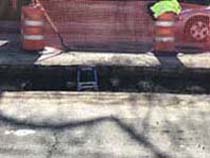
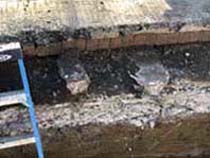
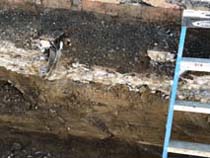

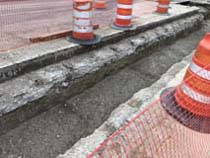
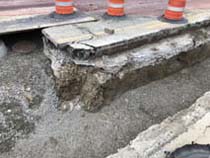
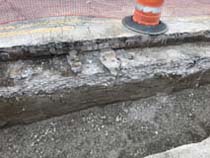
November 15th, 2018 at 12:07 pm
I talked to the guys doing the Rehab on the Indianola bridge over Glen Echo and they found part of the old rail spur when they are doing that construction
October 30th, 2021 at 11:05 am
Different neighborhood but from the same era, I grew up in and around Grandview, and I remember as a kid in the 1960s walking along W. 5th Avenue in the Grandview Ave area during the winter and noticing that wherever the asphalt surface had broken down from salt and the freeze-thaw cycles there were visible brick pavers underneath. I remember that some of the pavers were engraved with the name of whatever company made them, but I don’t remember the name. I thought it was interesting that W. 5th had once been a brick street, and at some point they had come along and just put a layer of asphalt over the bricks without removing the pavers. I assume they’re still under there. It was also interesting that wherever the asphalt paving broke down the bricks underneath did not, which prevented the asphalt failure from turning into deep potholes. At some point crews would come along, throw down some patch, roll it out, and it was good as new. Ease of initial contraction and later repair are of course two of the advantages of asphalt vs pavers.